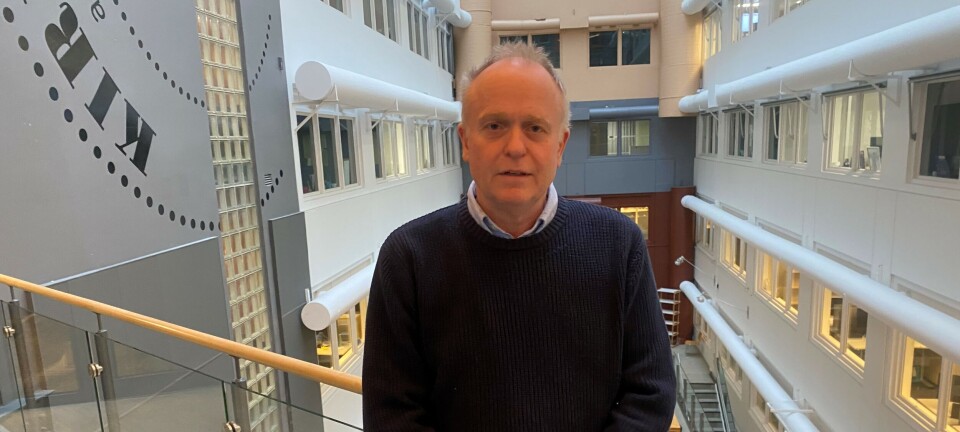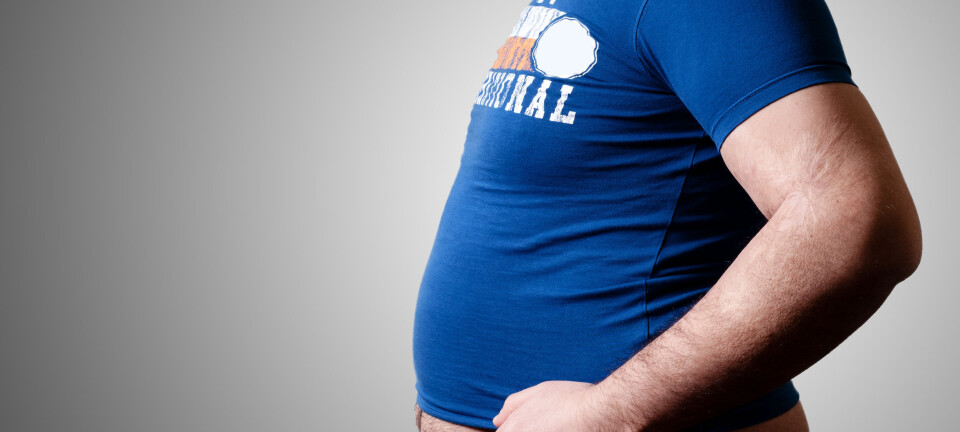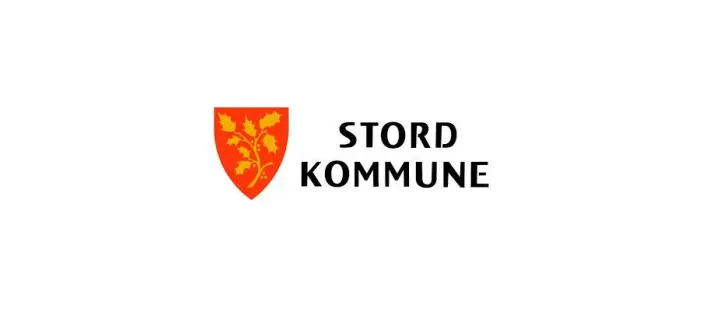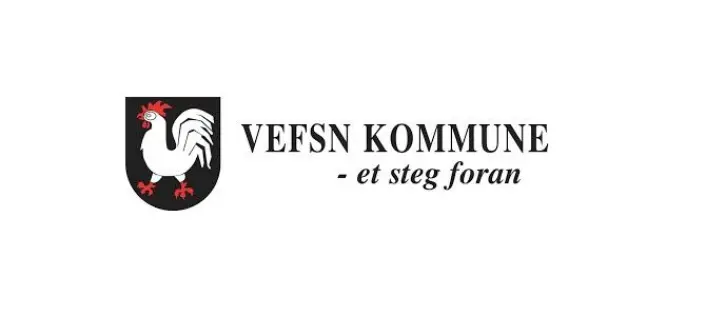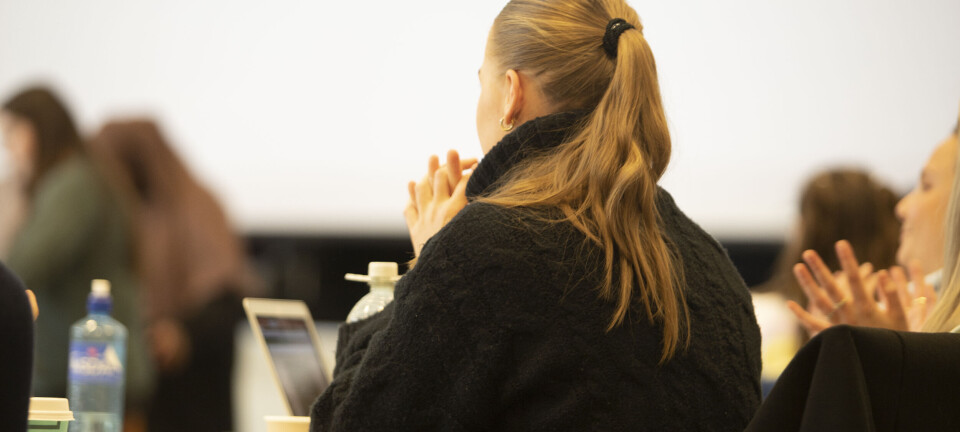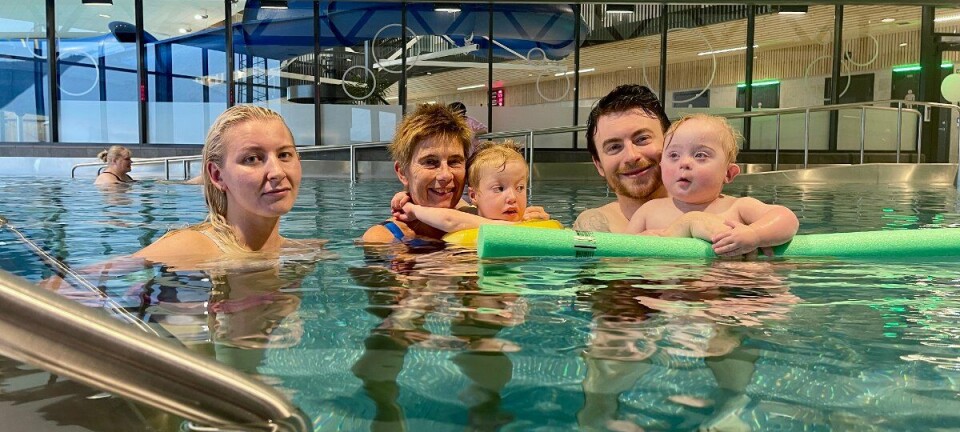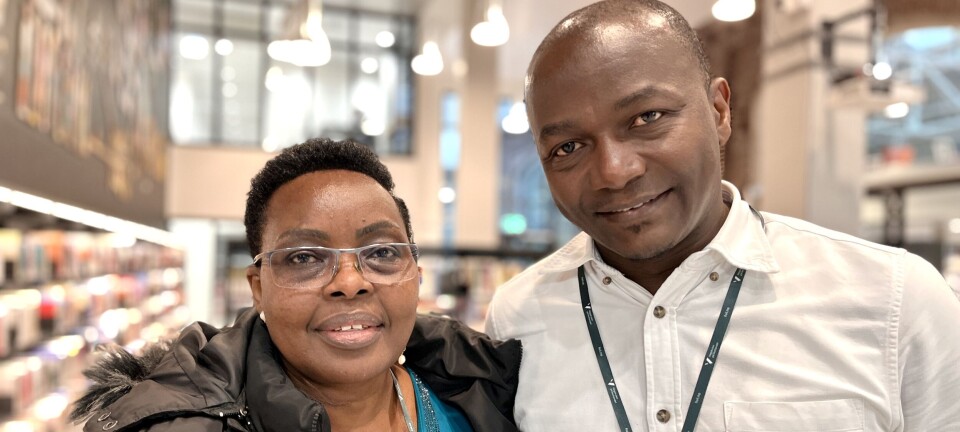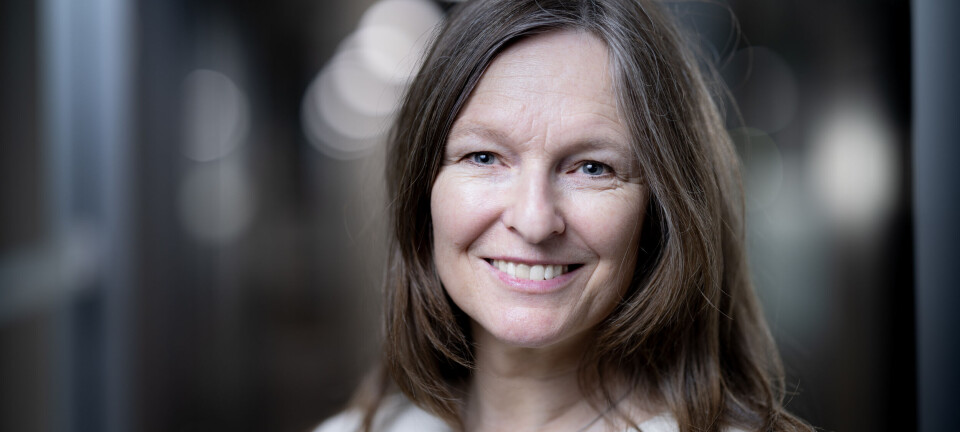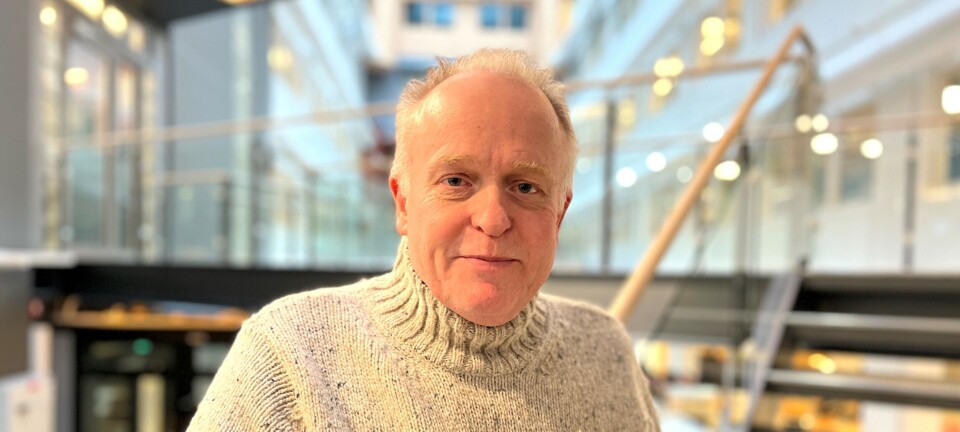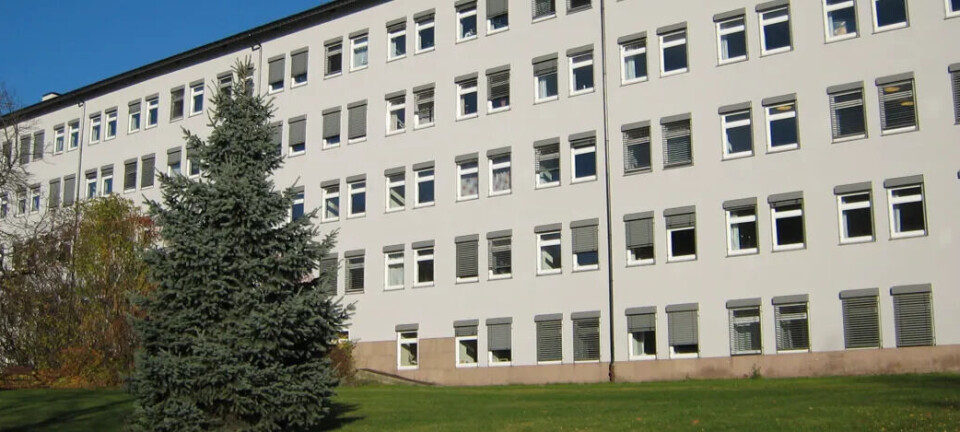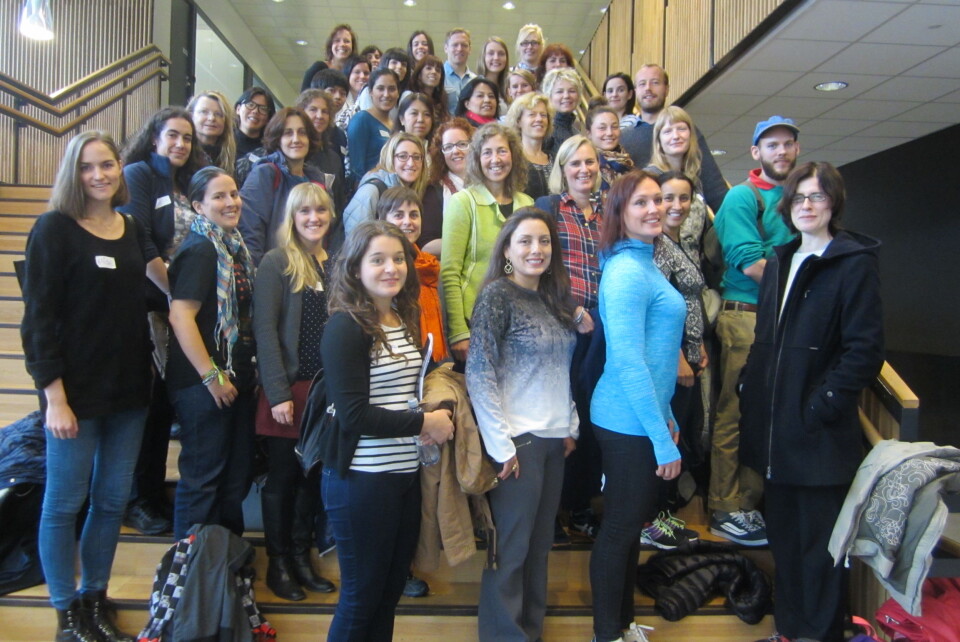
Basic Body Awareness Therapy (BBAT) – Movement Awareness, Everyday Movements and Health Promotion in Physiotherapy
Chronicle in Fysioterapeuten. English online-version.
Liv Helvik Skjærven, Professor in Physiotherapy, PT, MSc, is qualified in Norwegian Psychomotor Physiotherapy, in Basic Body Awareness Therapy, is licenced teacher in BBAT and coordinator of Basic Body Awareness Methodology (BBAM), Department of Occupational Therapy, Physiotherapy and Radiography, Faculty of Health and Social Sciences, Bergen University College, Bergen, Norway; is vice-president in International Organisation of Physical Therapy in Mental Health (IOPTMH), vice-chair in International Association of Teachers in BBAT (IATBBAT) and board- member of the Norwegian Institute of BBAT (NIBK).
Mary Anne Sundal, Assistant Professor, is qualified in Norwegian Psychomotor Physiotherapy, in Basic Body Awareness Therapy, is licenced teacher in BBAT and is a lecturer at Basic Body Awareness Methodology (BBAM), Department of Occupational Therapy, Physiotherapy and Radiography, Faculty of Health and Social Sciences, Bergen University College, Bergen, Norway.
Read the original article in Norwegian.
The postgraduate study program in physiotherapy at Bergen University College, Basic Body Awarenness Methodology (BBAM), ”attracts students from the whole world”, was the statement in the chronicle of the local newspaper, Bergens Tidende, Bergen, Norway, October 2015. What are the characteristics of Basic Body Awareness Therapy (BBAT) that attract such an international interest within physiotherapy? In this professional chronicle some of the important principles of the physiotherapeutic approch, Basic Body Awareness Therapy (BBAT), is described.
WHO has documented an incrcrease in people suffering from longlasting musculoskeletal and mental health problems (WHO 2015). Physiotherapy experiences from using BBAT reveals that people with ”multifactorial suffering” have a lack of contact with themselves, their physical body, emotions, boundaries, the external environment and relationship to others, with a consequence for the movement quality, daily function, habits and health1.
We ask – Is BBAT a carrier of important principles that matches a need in the multicultural society and the future physiotherapy?
BBAT is a movement awareness training program, a physiotheraputic approach, aimed at re-establishing new movement habits and ways of being, including reflective talk on the direct movement experiences to enhance learning and insight. The professional therapeutic approach provides reliable and valide assessment tools as well as structured strategies for individual and group therapeutic settings2. When movement principles in BBAT is implemented in physiotherapy, presence in and awareness of movement, is a core in therapy. The approach is person-centered and aims towards promoting health, with coping strategies as central in therapy. To enhance the contact with ”the self” the physiotherapist arranges for situations that focus on basic movement principles. BBAT and its principles can be implemented into clinical practice, health promotion and preventive health care.
Everyday movements – core movements for personal use
BBAT includes movement coordinations, situations and approaches designed to personally involve the patient during the period of treatment2. The BBAT-movements represent examples from everyday-movements, lying, sitting, standing, walking, relational movements and massage (touch). The movements are simple, small and soft, meant to foster more functional movement quality and habits with the aim for the patient to come in contact with, getting insight in and learning new movement strategies. The therapy situations do not require other equipment than a floor, a mat and a chair. The physiotherapist acts as a guide, bridging the therapy situation with the everyday life and needs. A treatment contract is developed in dialogue with the patient, focusing on how the movement principles can be adjusted and practiced at home, at work etc. Use of a diary is a concrete and helpful tool to strengthen the learning process and influences the therapeutic outcome.
An eye for movement quality and health
Basic Body Awareness Therapy is well kown for its focus on movement quality, ”how the movements are performed in relation to space, time and energy”, movement patterns and experiences3. Four perspectives are incorporated in BBAT as a framework and basis for assessment and therapy, and physical, physiological, psyco-socio-cultural and existential aspects are equally considered3. Postural stability, free breathing and mental awareness are key elements, when integrated into movements, promoting more functional movement quality, wellbeing and health. An often reported quote by the patients is ”I experience being more coherent, strong and safe”. By emphasising movement aspects into the movement learning, the patient can gain more functional form, flow, rhythm, energy and intention in their coordintions3.
A therapeutic approach – a learning cycle towards movement awareness
The Movement Awareness Learning Cycle includes 7 learning steps: to take contact with, explore, experience, integrate, create meaning, master and conceptualise/reflect on the movement experienc, all steps aiming to promote coping strategies4. The physiotherapist’s movement communication has been shown to be important in the process to transfer learning from the therapist to the patient4. Metaphors and imaging are integral in the movement awareness learning process and a support for the patient`s understanding.
Who can benefit from Basic Body Awareness Therapy?
Rsearch has demonstrated that persons suffering from anxiety, depression and post-traumatic diseases have good effect of BBAT5-7. The studies reveal that participants become more aware of their body as a means to connect to oneself and to life, becoming more attuned to inner sensations and emotions, as well as to other people. Symptoms related to depression are reduced resulting in improved motivation towards behavioural changes. Significant effect of treatment was reported and is described as a perceptual opening towards oneself and others, and towards more functional coping strategies in daily life7 8. Structured movement awareness training, organised by the patient him/herself, was described as necessary for gaining an effect.
Effect studies of BBAT in treatment of persons diagnosed with schizophrenia showed more functional movement quality, better body image, less anxiety9 10 as well as a stronger affect-regulation and sense of greater wellbeing, vitality and interest11 12. Furthermore, BBAT has shown to increase the ability to accept and tolerate more unpleasant experiences, coping with anxiety and promoting a sense of coherence. Improved body awareness and strengtened presence was reported to stimulate increased physical activity, safety and concentration13 14. Other studies with a qualitative research design support these findings11 15.
How patients suffering from eating disorders relate to their body and their body image is of special importance. Research has been conducted to search for relationship between the physiotherapist’s observation of movement quality and the patient’s report of movement experience where BBAT was the main approach16-18. Result indicated that BBAT was useful in establishing a more realistic body image18.
BBAT has been implemented in physiotherapy for women with chronic pelvic pain19-21, and is used in a study of factors enhancing motivation22-24. Studies including patients diagnosed with Fibromyalgia indicate positive experiences from the embodied learning process. By exploring new movement strategies, health-related quality of life as well as effectivity of treatment were promoted. It was reported that when new movement principles became integrated, the patient learned how to reestablish a release and change the pattern of activity24 25.
In a one-year follow-up physiotherapy of patients with long-lasting chronic pain where BBAT was included, it was found that physiotherapeutic assessment, focusing on movement quality, was a useful measure of body awareness. Such measurement was important for gaining an overveiw of the patient need and as a basis for an effective rehabilitation program26.
Basic Body Awarenss Movement Group Therapy as the main component in the treatment program of people suffering from borderline personality disorder is reported in two studies27 28. The patients participating improved significantly in (1) Functioning, (2) Symptoms and (3) Interpersonal problems. The magnitude of change on functioning and symptoms was significantly higher in the BBAT group compared to therapeutic talk, alone28. Movement group therapy, implemented in community based physiotherapy, for patients with long-lasting pain, indicate more functional movement quality, improved self-efficacy and relief of pain29.
Several research questions in relation to BBAT are left to be examined, for example the relationship between the movement awareness training and physical training. BBAT is not directed specifically towards physical activity and training. However, clinical experience show that patients are able to take up more demanding physical activity when they learn how to trust their body and when a sense of movement quality is established.
Historic origin of Basic Body Awareness Therapy
It was the French movement educator and psychotherapist Jacques Dropsy who developed the movement awareness approach, its theory and practice in the 1960s. The Swedish Physiotherapist Gertrud Roxendal, PhD, introduced the approach into physiotherapy at the end of the 1970s13. At the same time, BBAT was introduced and developed in Norway. The last 30 years quality improvement, professional developement and research has been initiated from the International Association of Teachers in Basic Body Awareness Therapy (IATBBAT).
With focus on a need in society
BBAT, as a physiotherapeutic approach, is developed within Scandiavian physioterapy in mental health and is increasingly attracting international interest. There is a professional need for physiotherapy approache to meet the documented increase of people suffering from longlasting multi-perspective musculoskeletal and mental health problems of the cultural diversity in society. BBAT is reported to be cost-effective, involves the patient and provides prcatical skills and insigth for use in daily life. BBAT`s movement principles and therapeutic strategies are innovative, with a structured groupapproach and concrete focus on functional and health promoting factors in the movement awareness learning. This is of specific value in transferring knowledge from therapist to patient. BBAT is known for its well developed criteria for use in observation og movement quality, and vocabulary for describing, analysing, guiding and being in dialogue with the patient. It is, however, important to underline that BBAT cannot be implemented in physiotherapy for all kinds of musculo-skeletal problems, and it is not for everyone. A physiotherapeutic assessment and clinical reasoning is basic to all clinical choice. To conclude, we want to underline that there is a strong need for further critical evaluation, research and clinical review, as well as opinion from society and from the patient`s point of view in relation to BBAT.
References
1. Skjaerven LH, Kristoffersen K, Gard G. How can movement quality be promoted in clinical practice? A phenomenological study of physical therapist experts. Phys Ther 2010;90(10):1479-92.
2. Skjaerven L, Gard, G, Sundal, MA, Strand, LI. Reliability and Validity of the Body Awareness Rating Scale (BARS), an Observational Assessment Tool of Movement Quality. European Journal of Physiotherapy 2015:19-28.
3. Skjaerven LH, Kristoffersen K, Gard G. An eye for movement quality: a phenomenological study of movement quality reflecting a group of physiotherapists' understanding of the phenomenon. Physiother Theory Pract 2008;24(1):13-27.
4. Gyllensten A, Skär, L, Miller, M, Gard, G Embodied identity—A deeper understanding of body awareness. Physiotherapy Theory and Practice 2010;26:439-46.
5. Madsen TS CJ, Nordbrandt M, Jensen JA Refugee experiences of indivudual basic body awareness therapy and the level of transference into daily lfe. An interview study. Journal of Bodywork and Movement Therapies 2015:Online 28 October 2015.
6. Danielsson L. Moved by Movement. A person-centered approach to physical therapy in the treatment of major depression. Gøteborg University, 2015.
7. Danielsson L, Rosberg, S. Opening toward life: Experiences of basic body awareness therapy in persons with major depression. Int J Qual Stud Health Well-being. 2015;10:Published online 2015 May 7. doi: 10.3402/qhw.v10.27069. PMCID: PMC4425812.
8. Johnsen RW RM. Feeling more in balance and grounded in one's own body and life. Focus group interviews on experiences with basic body awareness therapy in psychiatric healthcare. . Advances in Physiotherapy 2010;12:166–74.
9. Gyllensten AL, Ekdahl, C., Hansson, L. Long-term effect of Basic Body Awareness Therapy in psychiatric outpatient care. A randomized controlled study. Advances in Physiotherapy 2009;11:2-12.
10. Gyllensten AL, Hansson, L., Ekdahl, C. Outcome of Basic Body Awareness Therapy. A Randomised controlled study of patients in psychiatric outpatient care. Lund University, 2001.
11. Hedlund L, Gyllensten, AL. The physiotherapists' experience of Basic Body Awareness Therapy in patients with schizophrenia and schizophrenia spectrum disorders. Bodywork and Movement Therapies 2013;17:169-76.
12. Hedlund L. Basal Kroppskänndeom och psykomotorisk funtion hos personer med allvarlig psykisk sjukdom. Lund University, 2014.
13. Roxendal G. Body Awareness Therapy and The Body Awareness Scale, Treatment and Evaluation in Psychiatric Physiotherapy [Doctoral degree]. University of Göteborg and Psychiatric Department II, Lillhagen Hospital, Hisings Backa, 1985.
14. Skatteboe U. Å være i samspill [Hovedfagsoppgave], 1991.
15. Hedlund L GA. The experiences of Basic Body Awareness Therapy in patients with Schizophrenia. Bodywork and Movement Therapies 2010;3:245-54.
16. Catalan-Matamooros D. Physical therapy in Mental Health: Effectiveness of a physiotherapeutic intervention in eating disorders. Malaga University, 2007.
17. Catalan-Matamoros D S, L H, Labajos-Manzanares, M T, Mart ́ınez-de-Salazar-Arboleas, A, Sa ́nchez-Guerrero, E. A pilot study on the effect of Basic Body Awareness Therapy in patients with eating disorders: a randomized controlled trial. Clinical Rehabilitation 2011;27(7):617-26.
18. Thörnborg U MM. Rating body awareness in persons suffering from eating disorders - A cross-sectional study. Advances in Physiotherapy 2009:1-11.
19. Mattsson M DL, Mattsson B, Armelius K. Body Awareness Therapy with sexually abused women. Part 1: Description of treatment modality. Jurnal of Bodywork and Movement Therapies 1997;1:280-88.
20. Mattsson M WM, Dahlgren B, Mattsson B, Armelius K Body awareness therapy with sexually abused women. Part 2: Evaluation of body awareness in a group setting. Journal of Body Work and Movement Therapies 1998;2(1):38-45.
21. Mattsson M WM, Dahlgren L, Matsson B. Physiotherapy as Empowerment - Treating Women with Chronic Pelvis Paind. Advances in Physiotherapy 2000;2:125-43.
22. Grahn B, Ekdahl, C., Borgquist, L. Motivation as a predictor of changes in quality of life and working ability in multidiscplinary rehabilitation. Disability and Rehabilitation 2000;22:15:639-53.
23. Fjellman-Wiklund A, Grip, H, Andersson, H, Karlsson, JS, Sundelin, G EMG trapezius muscle activity pattern in string players: Part II-Influences of Basic Body Awareness Therapy on the violin playing technique. International Journal of Industrial Ergonomics 2004;33:357-67.
24. Mannerkorpi K, Gard, G. Physiotherapy group treatment for patients with fibromyalgia - an embodied learning process. Disability and Rehabilitation 2003;25, No. 24:1372-80.
25. Gard G. Body Awareness Therapy for patients with fibromyalgia and chronic pain. Disability and Rehabilitation 2005;27(12):725-28.
26. Bergström M EM, Mattsson M, Stålnacke BM. One-year follow-up of body awareness and perceived health after participating in a multimodal pain rehablitation programme - a pilot. European Journal of Physiotherapy 2014:Early online: 1-9.
27. Skatteboe UB, Friis, S., Hope, M, K., Vaglum, P. Body Awareness Group Therapy for Patients with Personality Disorders. 1. Description of the therapeutic method. Psychoter Psychosom 1989;51:11-17.
28. Leirvåg H PG, Karterud S. Long-term continuation of treatment after short-term day treatment of female patients with severe personallity disorders: Body Awareness Group Therapy versus Psychodynamic Group Therapy. Nord J Psychiatry 2010;64; NO 2.
29. Klingberg-Olsson K LM, Lindström I. "Våga välja vad jag vill" - Basal Kroppskänndom och samtal i grupp - ett samarbetsprojekt mellan sjukgymnast och psykolog. Nordisk Fysioterapi 2000;4:133-42.
WHO: http://www.who.int/occupational_health/publications/hazardpsychosocial/en


